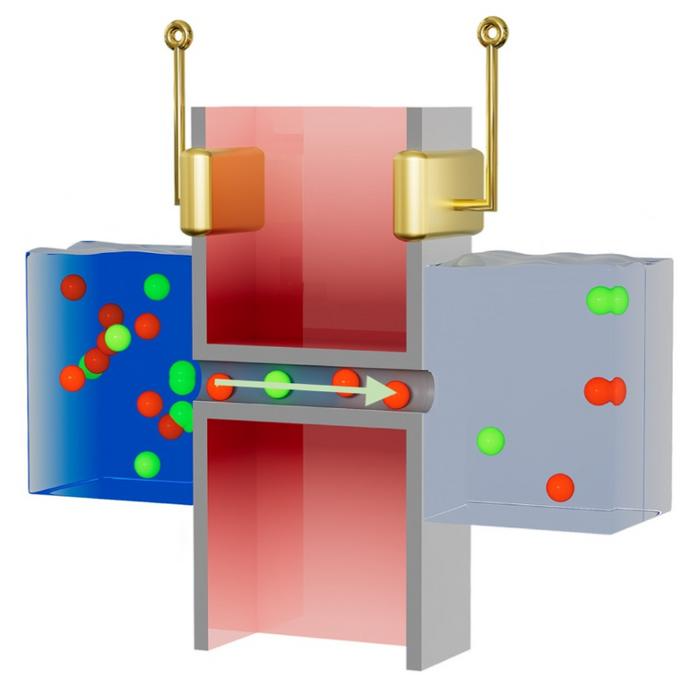The differential in salinity between saltwater and freshwater along the world’s coastlines is a mostly untapped energy source. This distinction can be used by a novel nanodevice to produce electricity.
 Nanofluidic device generates power with saltwater. Image Credit: The Grainger College of Engineering at University of Illinois Urbana-Champaign
Nanofluidic device generates power with saltwater. Image Credit: The Grainger College of Engineering at University of Illinois Urbana-Champaign
In the journal, Nano Energy, a group of researchers from the University of Illinois Urbana-Champaign described a design for a nanofluidic device that can transform ionic flow into useful electric power. The group thinks that their invention might be used to harness the ionic fluxes that occur naturally at the seawater-freshwater interface.
While our design is still a concept at this stage, it is quite versatile and already shows strong potential for energy application. It began with an academic question— ‘Can a nanoscale solid-state device extract energy from ionic flow? — but our design exceeded our expectations and surprised us in many ways.
Jean-Pierre Leburton, Project Lead and Professor, Electrical and Computer Engineering, University of Illinois Urbana-Champaign
Salt molecules naturally migrate from areas of higher concentration to areas of lower concentration when two bodies of water with differing salinities converge, such as when a river empties into an ocean. These flows’ energy can be captured since it is made up of electrically charged ions that originate from the dissolved salt.
A nanoscale semiconductor device created by Leburton’s team uses a phenomenon known as “Coulomb drag” between moving ions and electric charges. Electric forces drive the device charges to travel from one side to the other, generating voltage and electric current as the ions flow through the device’s small channel.
When simulating their system, the researchers discovered two unexpected phenomena. First, the simulations showed that the device functions as well if the electric forces are repulsive, despite their initial expectation that Coulomb drag would mostly be caused by the attractive force between opposing electric charges. Drag is caused by positively and negatively charged ions.
Just as noteworthy, our study indicates that there is an amplification effect. Since the moving ions are so massive compared to the device charges, the ions impart large amounts of momentum to the charges, amplifying the underlying current.
Mingye Xiong, Study Lead Author and Graduate Student, University of Illinois Urbana-Champaign
Additionally, the researchers discovered that these effects are unaffected by the particular channel layout and material selection as long as the channel diameter is small enough to guarantee close contact between the ions and the charges.
The researchers are investigating how arrays of these devices can be scaled for real-world power generation while they are in the process of patenting their findings.
Leburton added, “We believe that the power density of a device array could meet or exceed that of solar cells. And that is not to mention the potential applications in other fields like biomedical sensing and nanofluidics.”
The work also included contributions by Kewei Song.
Journal Reference:
Xiong, M., et al. (2023) Ionic coulomb drag in nanofluidic semiconductor channels for energy harvest. Nano Energy. doi:10.1016/j.nanoen.2023.108860
Source: https://illinois.edu/